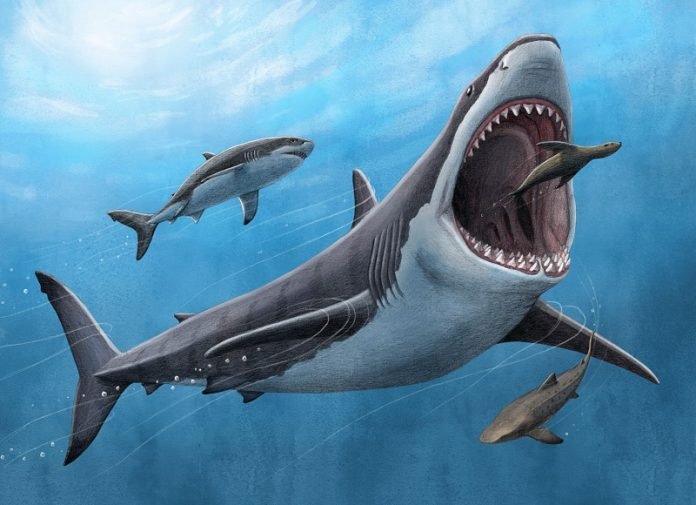
Scientists have recently uncovered a fascinating secret about the extinct megalodon shark: it was a warm-blooded creature, unlike most fish.
A team from UCLA, UC Merced, and William Paterson University delved into the ancient predator’s past, making an exciting discovery which might explain why these massive creatures vanished around 3.6 million years ago.
Megalodon, a giant shark that could grow up to 50 feet long, was a type of mackerel shark. Today, this group includes species like the great white and thresher shark.
Unlike most fish, which are cold-blooded, mackerel sharks are somewhat warm-blooded, maintaining parts of their body at temperatures higher than the water surrounding them.
The research team found that megalodons were even warmer.
They managed to maintain a body temperature approximately 7°C (about 13°F) warmer than the water around them. This temperature gap is much higher than other sharks from that period, suggesting megalodons were warm-blooded.
To unravel this secret, the scientists analyzed megalodon’s teeth, the most common fossils of these extinct sharks.
Teeth are made up of a mineral called apatite that contains different forms of carbon and oxygen, known as isotopes.
By studying the isotopes in the shark’s teeth, the researchers could tell a lot about the creature, like where it lived, what it ate, the chemistry of the seawater in its habitat, and its body temperature.
In general, the isotopes in the teeth of cold-blooded sharks don’t differ much from the temperature of the ocean.
But in warm-blooded creatures, their teeth reflect the heat produced by their bodies, showing temperatures higher than the surrounding water. Therefore, any difference in isotope values between megalodons and other sharks of the time suggested how much the megalodon could warm its own body.
After analyzing teeth from megalodons and other sharks found in five different locations worldwide, the researchers concluded that the megalodon had an exceptional ability to regulate its body temperature.
This warmth gave it an advantage, allowing it to move faster, live in colder waters, and spread across the globe.
However, the same advantage may have been its downfall. The megalodon lived during a time when the earth was cooling down, leading to sea level and ecological changes.
The researchers suggested that megalodon’s high-energy lifestyle and its need to consume vast amounts of food to stay warm might have been its undoing.
Having discovered the warm-blooded nature of megalodons, the team plans to use the same methods to study other species.
The goal is to understand how common warm-bloodedness is in top marine predators throughout history. The research also offers insights into the vulnerabilities of large marine predators facing climate change today.
Follow us on Twitter for more articles about this topic.



